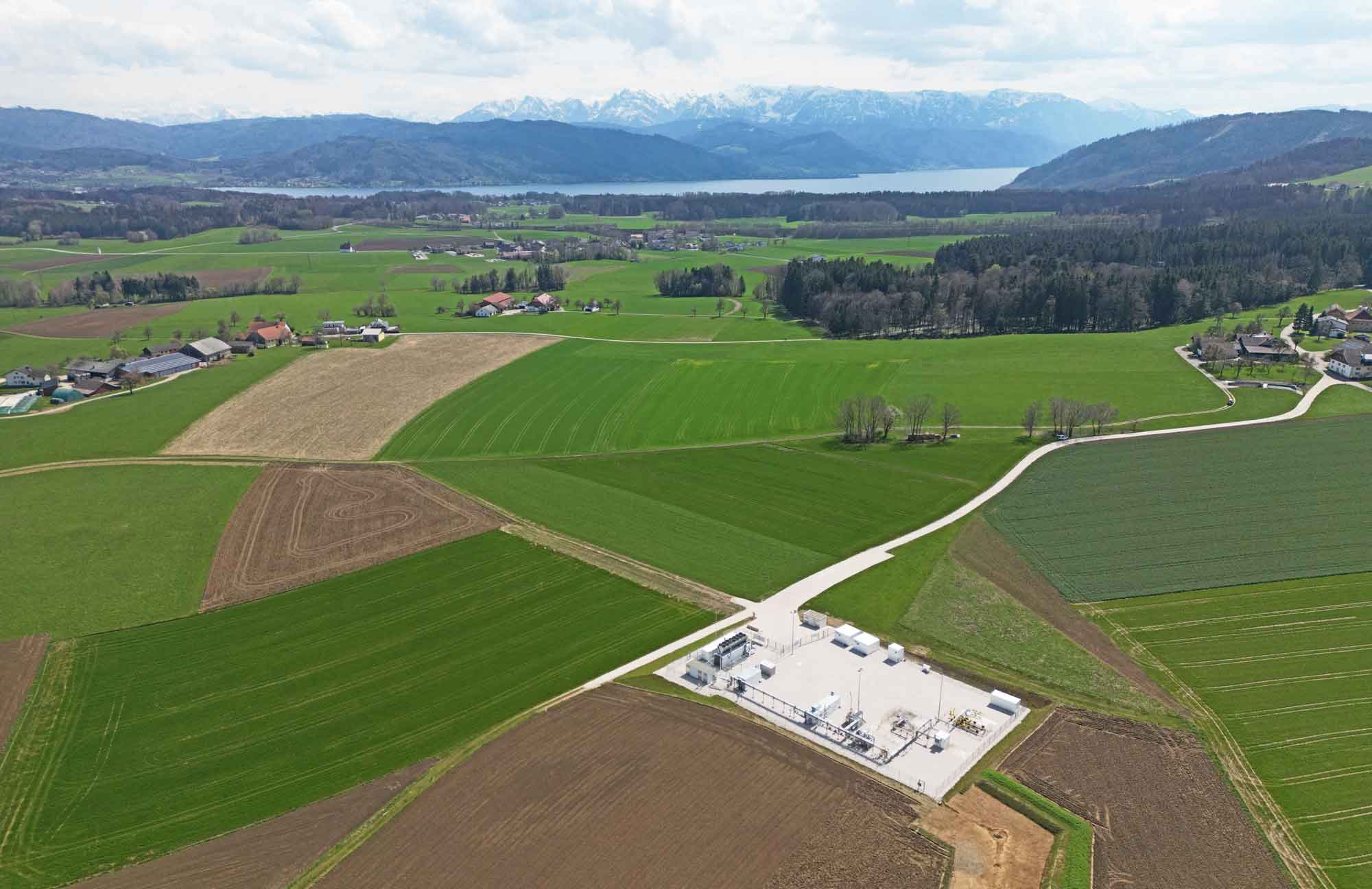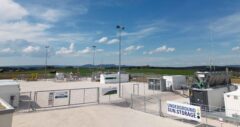Two years after the launch of the “Underground Sun Storage 2030” project led by RAG Austria (see eia issue 5/2021) and following commissioning in April 2023, the project is now undertaking the seasonal storage of 100 % green hydrogen in an underground natural-gas storage facility under real-life conditions for the first time. Storing wind and solar power over the long term is one of the core challenges in renewable energy systems. Converting surplus solar and wind power into gaseous energy carriers that can be stored seasonally and in large volumes has the potential to become a key technology for a reliable energy supply based on renewable sources. Underground gas storage facilities are established large-volume energy storage facilities with high storage capacities. The natural-gas infrastructure – pipelines and storage facilities – is to be used in the future to store green hydrogen underground.
Running a demo plant
This pioneering concept for energy storage has been studied over the past few years in the Austrian flagship project entitled “Underground Sun Storage 2030”. The ability of underground pore storage systems to handle hydrogen has already been investigated and demonstrated extensively in previous projects. Now, for the first time anywhere in the world, the concept of storing 100% hydrogen in such underground facilities is being implemented under real-life conditions and perfected between now and 2025.
In RAG’s cross-sector demo plant in Gampern in Upper Austria, solar energy is being converted into green hydrogen via electrolysis and stored in its pure form in a disused natural storage facility for natural gas. The facility is big enough to store the surplus summertime energy produced by around 1,000 solar panels on single-family homes. This unneeded energy is put into storage. In the winter, the gas generated by climate-neutral means can either be used as a material or energy source in the local area or supplied directly for heating or power via hydrogen powered combined heat and power plants.
Erkenntnisse für die Energiezukunft
Ein Konsortium aus Unternehmens- und Forschungspartnern1 begleitet das Projekt mit umfassenden interdisziplinär technisch-wissenschaftlichen Untersuchungen. Gemeinsam wollen die Partner wertvolle technische und ökonomische Erkenntnisse für den Aufbau einer gesicherten Wasserstoffversorgung in Österreich gewinnen.
Ergänzt werden diese Untersuchungen durch die Entwicklung von geeigneten Aufbereitungstechnologien, die Modellierung von künftigen Energieszenarien sowie von weiteren techno-ökonomischen Analysen. Dabei stehen folgende Themen im Zentrum: Wasserstoff als Ersatz für fossiles Erdgas, Direktverwendung von Wasserstoff in der energieintensiven Industrie, Aufbereitungsbedarf und -technologien sowie Verwertungsmöglichkeiten von Wasserstoff mit hoher Reinheit.
www.uss-2030.at
www.wiva.at/project/uss2030
1 Project partners: RAG Austria AG (project management), Axiom Angewandte Prozesstechnik GmbH, Energie AG Oberösterreich, Energy Institute at the Johannes Kepler University Linz, EVN AG, HyCentha Research GmbH, K1-MET GmbH, TU Wien, University of Natural Resources and Life Sciences Vienna, VERBUND, voestalpine Stahl GmbH
The Underground Sun Storage 2030 project forms part of the WIVA P&G – Austria Power & Gas Model Region Hydrogen Initiative research initiative.
www.wiva.at

